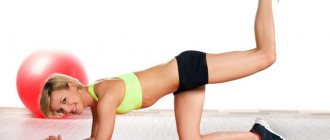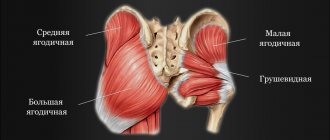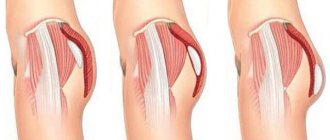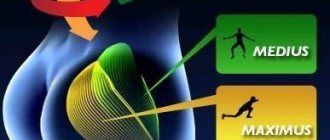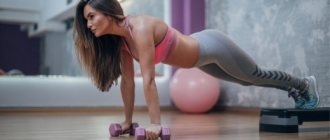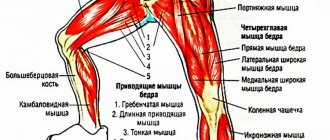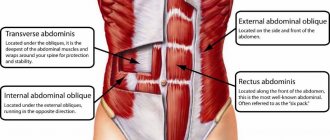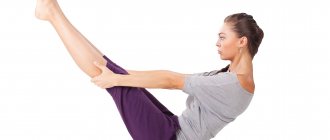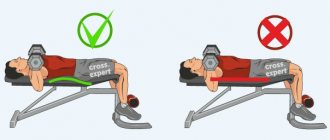Everything about leg abduction in a crossover: the muscles that bear the greatest load, the benefits of the exercise. The techniques for performing it in several ways are described in detail - in a standing position or with emphasis on a bench. We'll tell you how best to implement the exercise into your training plan, and what mistakes you need to avoid.
What muscles are involved?
Muscles receiving load in crossover swings from the lower block:
- Back : main - gluteus maximus, hamstring muscles, stabilizer muscles - spinal extensors, obliques, gluteus minimus/medius, quadratus lumborum, rectus abdominis ( "Abs": myth or reality? ).
- Forward : front surface of the thigh (quads).
- To the side : what muscles work - gluteus medius, stabilizers, inner thigh (adductor).
You will learn about the advantages of performing exercises with one leg and their effect on the gluteal muscles from the article “ Romanian deadlift on one leg with a barbell or dumbbells: developing the buttocks
What to replace
Crossover squats are more of a formative exercise. It can be easily replaced with other basic movements performed in simulators. For example, leg press in a machine or hack squats.
A similar effect is also achieved by doing squats in a Smith machine.
As for options with free weights, remember not only about their high effectiveness and versatility of impact on muscles, but also about the increased risk of injury.
Benefit
For slimming thighs and thighs
Do swings help you lose weight in your legs? Indirectly, yes, like absolutely any activity, including walking, making love, and even picking your nose, if it helps you create a calorie deficit
